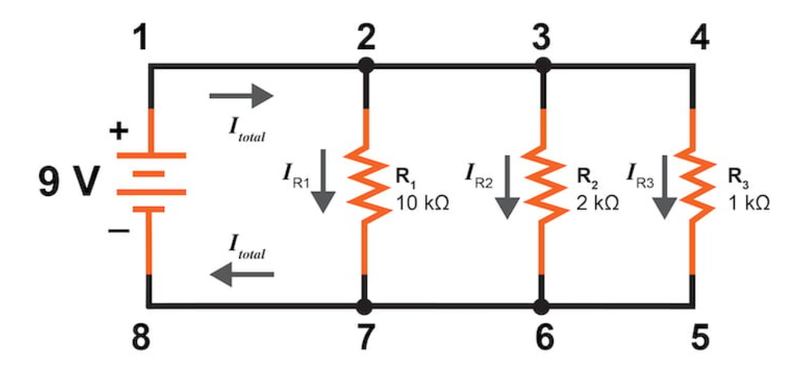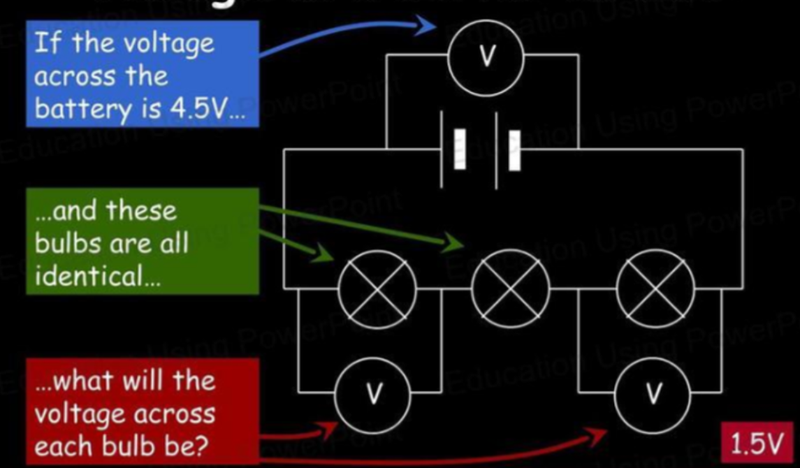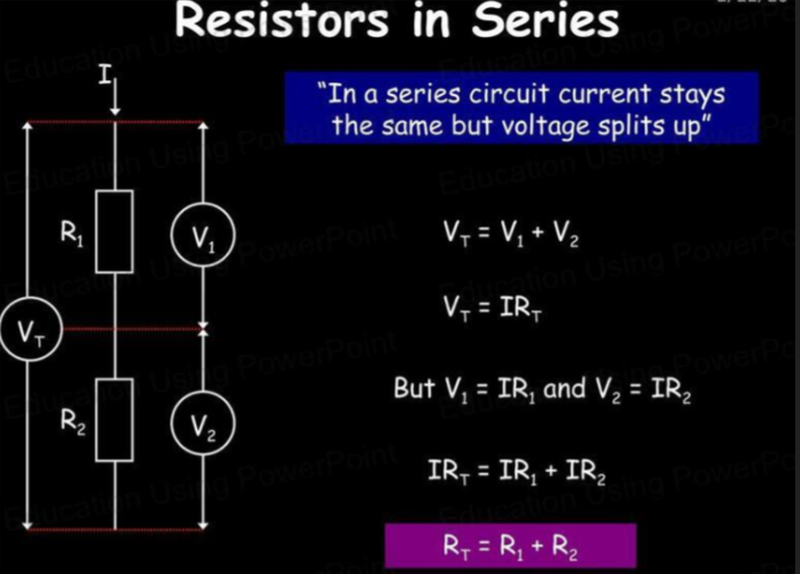What is a Circuit?
- A circuit is a system consisting of wires, a battery and many other components that utilize current and voltage to achieve various effects.
- Components in a circuit can either be "in series", where they are back to back, or "in parallel" where they are branching off from each other.

- In the first circuit the light bulbs are in series and in the second they are in parallel.
- In series, the current is "forced" down one path.
- Whereas in parallel, the current gets to "choose" which path to go down.
- In this case, the light bulbs are resistors, as the current faces more resistance when it goes through them.
- Keep in mind that, most often the resistance of the wires in a circuit can be ignored, as they are often made of conductive materials, quite short, and don't heat up a lot.
- This leads to them having small enough resistance to the point where it is negligible.
Behavior of Current in a Circuit
- Given the choice, current will always choose the path of least resistance.
- While in series circuits the current will go down the only available path, in parallel circuits, the current will split up so that it faces the least possible resistance.
Current in a Series Circuit
- Current will be the same anywhere in a series circuit.
- This means that if you put an ammeter (a device that measures current) in a series circuit, it will give the same value for current no matter where you put it.
- This is because the current has no options, so all of it will be distributed to one path.
Current in a Parallel Circuit
- Current in a parallel circuit will split up.
- For example, if there are two paths of equal resistance, the current will split in two, and each half will go down one path.
- However, if there are multiple paths of different resistance, something different happens.
- While it may seem that all the current would go down the path of least resistance, the current actually goes through all paths.

- Imagine individual electrons as cars on a highway.
- The highway splits into two branching paths, one is wide, highway with recently renovated asphalt.
- The other is narrower and has a lot of cracks and holes in the asphalt.
- As the wider highway is easier to drive through, it has less resistance, and the narrower highway has more resistance.
- The cars will choose to go down the wider highway first, but as more cars fill up, the highway gets more crowded.
- If even more cars would go down the wider highway, then there would be a traffic jam.
- So a few cars decide to go down the narrower highway.
- This is because, even though the narrower highway is harder to drive through, it has less traffic!
- This way all of the cars can travel the fastest.
- If there was only one highway, then all the cars would have to go down there, and there would be more traffic, leading to the cars going slower, or less current.
- Thus we can see that giving more branching paths actually increases the total current!

Behavior of Voltage in a Circuit
- Voltage behaves in the opposite way to current.
- In series, the voltage will split up, whereas in parallel the voltage will stay the same.
Voltage in a Series Circuit
- The voltage will split up between different resistors.
- This is because current is constant in the different resistors.

- For a visualization, imagine a monster truck going up slopes.

- If the slopes are in series, then the truck has to climb up each slope separately.
- If the monster truck uses more fuel to jump higher from the slope, then it will have to use less fuel for each slope so that it doesn't run out.
- This leads to it jumping less high, similar to how there is less voltage when it is split across a series.
Voltage in a Parallel Circuit
- In a parallel circuit, the voltage pushes with the same force on all resistors.
- This is because current changes in different resistors, so voltage remains constant.
- Once again imagine the monster truck.
- Now, instead of going up slopes one by one, it goes up two slopes that are placed closely together.
- It only has to use the fuel it would need to go up one slope to go up two!
- This means that it can jump higher (more voltage), as it uses less fuel per slope!
Resistors in Series and Parallel
- Thus using this knowledge we can determine that:



Sources
https://animalia-life.club/qa/pictures/parallel-series-circuit
https://schematicguitarlesson00.z4.web.core.windows.net/ohms-law-for-parallel-circuits.html